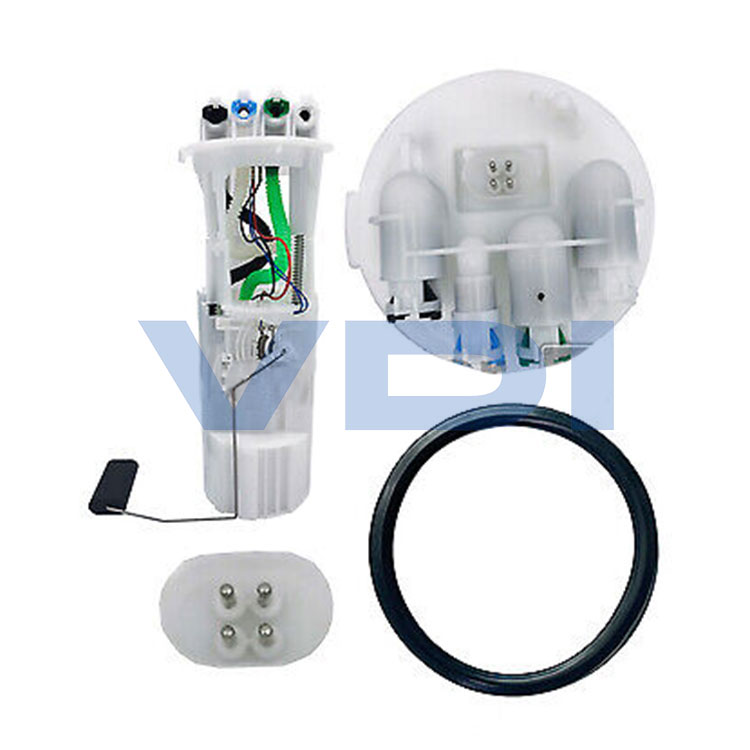Types of Fuel Pumps
2024-07-15
A fuel pump is a crucial component in internal combustion engines, responsible for delivering fuel from the tank to the engine at the required pressure. There are two main types of fuel pumps: mechanical and electric. Here's a detailed overview:
Types of Fuel Pumps
1. Mechanical Fuel Pumps
- Usage: Commonly used in older carbureted engines.
- Operation: Driven by the engine's camshaft or crankshaft, using a diaphragm or plunger mechanism.
- Features: Simple design, relies on engine speed for operation, typically mounted on the engine block.
2. Electric Fuel Pumps
- Usage: Standard in modern fuel-injected engines.
- Operation: Powered by the vehicle's electrical system, often located inside the fuel tank or along the fuel line.
- Features: Provides consistent fuel pressure, can operate independently of engine speed, quieter and more efficient.
Functions
- Fuel Delivery: Transfers fuel from the tank to the engine.
- Pressure Regulation: Maintains the correct fuel pressure for efficient engine performance.
- Fuel Filtration: Often integrated with filters to ensure clean fuel supply.
- Prevention of Vapor Lock: In fuel-injected systems, maintains pressure to avoid vapor lock and ensure smooth operation.
Components
- Pump Assembly: The main body housing the pumping mechanism.
- Inlet and Outlet Ports: Connections for the fuel lines.
- Pressure Regulator: Ensures fuel is delivered at the correct pressure.
- Fuel Filter: Removes impurities from the fuel.
- Electrical Connector (for electric pumps): Connects to the vehicle's electrical system.
Symptoms of a Failing Fuel Pump
1. Engine Sputtering: Irregular fuel delivery can cause the engine to sputter, especially at high speeds.
2. Difficulty Starting: A failing pump may not supply enough fuel for starting the engine.
3. Stalling: Inconsistent fuel flow can cause the engine to stall.
4. Loss of Power: Insufficient fuel delivery can result in a noticeable drop in engine power.
5. No Noise from the Pump: Electric fuel pumps usually make a humming noise; silence may indicate failure.
Maintenance and Replacement
- Regular Inspection: Check fuel lines and connections for leaks or damage.
- Fuel Filter Replacement: Regularly replace the fuel filter to ensure clean fuel supply.
- Listen for Unusual Noises: Be alert to changes in the sound of the fuel pump.
- Professional Diagnosis: Have a mechanic diagnose any suspected fuel pump issues.
Replacement Procedure for Electric Fuel Pump
1. Safety First: Disconnect the vehicle’s battery to prevent electrical shocks.
2. Access the Pump: Depending on the vehicle, this may involve removing the rear seat, trunk liner, or fuel tank.
3. Disconnect Fuel Lines and Electrical Connector: Carefully disconnect these components to avoid spills and damage.
4. Remove and Replace the Pump: Take out the old pump and install the new one, ensuring all seals and gaskets are properly positioned.
5. Reassemble: Reconnect fuel lines, electrical connectors, and reassemble any components removed.
6. Test the Pump: Reconnect the battery and start the vehicle to ensure the new pump is functioning correctly.
Replacement Procedure for Mechanical Fuel Pump
1. Disconnect the Battery: Ensure safety by disconnecting the battery.
2. Access the Pump: Locate the pump on the engine block.
3. Disconnect Fuel Lines: Carefully remove the inlet and outlet fuel lines.
4. Remove the Pump: Unbolt the pump from the engine block.
5. Install the New Pump: Place the new pump, ensuring proper alignment with the camshaft or crankshaft.
6. Reconnect Fuel Lines and Battery: Secure the fuel lines and reconnect the battery.
7. Test the Pump: Start the engine to verify the new pump’s operation.
Proper maintenance and timely replacement of a failing fuel pump are crucial to ensure the efficient performance of your vehicle's engine.



